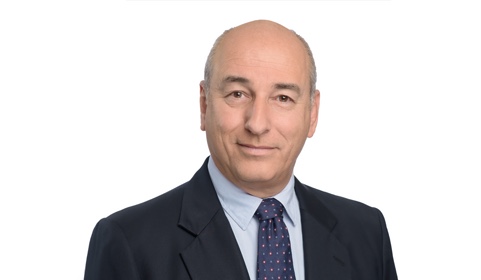A Turning Point in Inventive Step Analysis – Patentability of Polymorphs

In a landmark ruling in the matter of MCA 32365-05-20 Intra‑Cellular Therapies, Inc. v. The Patents Authority ,the Tel Aviv District Court reversed a decision of the Patents Registrar, who refused to grant a patent on an invention directed to a crystalline form of lumateperone tosylate. The decision includes guidelines as to how inventive step is to be analyzed, including the “obvious to try” test. The matter was remanded to the Registrar of Patents for reconsideration.
In a judgment dated 12.4.2022, the Tel Aviv District Court (the Honorable Justice Gershon Gontovnik) accepted an appeal of Intra-Cellular Therapies Inc. from a decision of the Registrar of Patents, which denied a patent for a crystalline form of a salt the chemical lumateperone – the active ingredient in the drug CAPLYTATM used for treating mental illness, such as depression and anxiety, and in various neurological disorders.
The Registrar of Patents ruled that the invention – a plymorph of the salt lumateperone tosylate – did not entail an inventive step, since, in light of the prior art, the average skilled person would have deemed it obvious to make such a crystalline form, and since the invention was the result of an experiment conducted with a reasonable expectation of success.
Appellant, Intra-Cellular Therapies Inc., appealed from patent office’s decision. The appeal drew the attention of the Manufacturers Association, that acting on belhf of the Israeli generic Industry, sought to support the Registrar’s decision and policy due to the wide-ranging implications that the judgment might have, and joined the proceedings as amicus curiae.
The judgment of the Honorable Justice Gontobnik sets rules regarding the manner in which the question of whether a given invention has an inventive spark that justifies the granting of a patent should be answered, and it is expected that the guidelines for patent examiners will be amended as a result. In particular, the ruling refers to inventions in the field of pharmaceutical industry such as salts and new crystals of active ingredients.
According to the court’s approach one ought not impose too heavy a burden on pharmaceutical companies to meet the requirement of inventive step for more than one reason. First, research and development expenditures in the area of pharmaceutics are high, and the investment of resources in medical research should be encouraged. Setting a threshold that is too high for a patent will lead to excessive deterrence of potential investors from trying to pursue research channels, given the unwillingness to spend financial resources without guaranteeing exclusivity at the end of the road in the form of patent recognition. Second, there is a clear public interest in developing inventions in the medical field. A new drug improves quality of life and may save lives. The public interest requires the encouragement of this industry. The court noted, citing the literature (A. Friedman), that it was acceptable to him that in the pharmaceutical field “where there is a doubt as to whether an average person skilled in the art would have considered the new invention without investing his own ingenious imagination, the benefit of this doubt must be given to the inventor and the inventor must be allowed to register his invention as a patent”.
The court stressed that on the other hand one should be vigilant and prevent abuse of the patent system and the so-called phenomenon of evergreening.
In the judgment, the court divides the inventions into three categories according to the level of direction of the publications for the invention:
(a) The first category includes prior art publications that do not provide real direction to the invention other than a general statement, where the number of options at stake is very large; In such circumstances it is relatively easy to establish an inventive step, and it will be difficult to deny it by means of the “obvious to try” test – or to establish “a reasonable chance of success.”
(b) The second category includes prior art publications that provide real direction on how to combine the materials underlying the invention, or prior art publications where the combination underlying the patent application seems obvious to an average skilled person, and the invention can be easily reached in light of it. In such circumstances our inclination would be against granting a patent.
(c) In the third category are the situations where the prior art publications include some direction to the invention, which arises from combining them together, but such direction is not sufficiently detailed, leaving, ostensibly, a domain of discretion to the skilled person examining them. These are the more difficult cases. In such a case it is clear to the skilled person that there exists a potential to achieve the desired result by combining the relevant materials, but there is no detailed direction in advance to the path that turned out to lead to the invention.
The purpose of the rules is to balance on the one hand the danger of arbitrariness in the exercise of the law in the absence of clear rules and in the exercise of hindsight, against on the other hand the need to maintain flexibility in exercising the discretion of patent examiners. The third category reflects the highest degree of discretion available to the Patent Office to recognize or deny inventive step. The court added that the complexity of this category cannot be addressed using simple “rules of thumb”, and that very much depends on the circumstances at hand. It was also determined that the “obvious to try” test is nothing more than an auxiliary test that does not replace the basic rules for determining the existence of inventive step.
The court appreciated that the task of crystallizing compounds is not straight forward: “… [t]he formation of soluble materials is not the same as the formation of insoluble materials. the formation of complex molecules is not the same as the formation of simpler molecules. Attempts to crystallize the very same material can succeed or fail.” According to the court’s approach, in many cases “reaching the desired crystal or salt passes through the use of conventional salting operations, solvents, means of heating or cooling and and like processes customary in industry. But the use of such processes does not mean that the road itself will not be free of difficulties. A look at the chemical and physical properties of salts, compounds and crystals can raise the possibility of formulating some substances, some of which are not for industrial use, in a way that requires an inventive spark to overcome the inherent barriers that their treatment raises.” Thus, the use of conventional laboratory operations does not in itself preclude inventive step.
The ruling, which rejected the position of the Manufacturers’ Association, may serve as an injenction of encouragemt for the innovative pharmaceutical companies who file patents in Israel.
The appellant was represented by Gilat, Bareket & Co. of the Reinhold Cohn Group.
Contact Person for additional information: David Gilat (davidg@gilatadv.co.il )
This article is provided for general information only. It is not intended as legal advice or opinion and cannot be relied upon as such. Advice on specific matters may be provided by our group’s attorneys.
